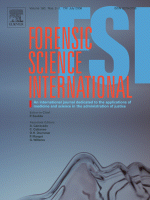

 |
 |
Catecholamine Levels in Relation to the Cause of Death |

CITATION:
Bao-Li Zhu, Takaki Ishikawa, Tomomi Michiue, Dong-Ri Li, Dong Zhao, Li Quan,
Shigeki Oritani, Yasumori Bessho and Hitoshi Maeda.
Postmortem serum catecholamine levels in relation to the cause of death.
Forensic Sci Int; 20 December 2007: V173; Issues(2-3), Pages 122-129.
CHAS NOTE:
Only the ABSTRACT of this article is currently posted.
If you purchase its PDF file, plz Email it to me so that it can be shared with others!

Postmortem Serum Catecholamine Levels in Relation to the Cause of Death.
Bao-Li Zhu [legalmed@med.osaka-cu.ac.jp], Takaki Ishikawa, Tomomi Michiue, Dong-Ri Li, Dong Zhao, Li Quan, Shigeki Oritani, Yasumori Bessho and Hitoshi Maeda.
 Department of Legal Medicine, Osaka City University Medical School,
Department of Legal Medicine, Osaka City University Medical School,
Asahi-machi 1-4-3, Abeno, 545-8585 Osaka, Japan.
Abstract
Catecholamines are major humoral factors and neurotransmitters that contribute to various stress responses. However, they have been considered unstable due to agony, terminal medical care and postmortem interference. The present study was a comprehensive investigation of postmortem serum levels of adrenaline (Adr), noradrenaline (Nad) and dopamine (DA) with regard to the cause of death in serial medicolegal autopsy cases (n = 542) including fatalities from various traumas and diseases. There was a slight tendency toward postmortem increases of Nad and DA in cardiac blood as well as Adr and Nad in peripheral blood, a slight age-dependent decrease in Adr and DA in right heart blood, and a marked increase in serum DA due to administration during critical medical care. When these factors were taken into consideration, significantly higher cardiac blood levels were observed for Adr and Nad in injury and asphyxiation cases and for Adr in fatal methamphetamine (MA) abuse and other poisoning cases, whereas those levels were lower in fatal hypothermia. Drowning, fire fatality, acute cardiac death and cerebrovascular disease showed intermediate Adr and Nad levels. The DA level was elevated in cases of injury, hyperthermia, MA fatality and other poisoning. Topographical analyses suggested that the major sources of increased serum catecholamines in cases of injury was abdominal viscera including adrenal glands, and that in cases of asphyxiation, drowning, fire fatality, hyperthermia, MA fatality, other poisoning, acute cardiac death and cerebrovascular disease was the extremities in addition to abdominal viscera. However, there was in part a large case-to-case difference in each marker related to individual causes of death. These findings differed markedly from clinical observations and suggest that the postmortem serum catecholamine levels may reflect the magnitude of physical stress responses during the process of death in individual cases.
Forensic Science International
Volume 173, Issues 2-3, 20 December 2007, Pages 122-129.
Received 11 December 2006; revised 8 February 2007; accepted 12 February 2007.
Available online 28 March 2007.


 Email Charly at: c-d-miller@neb.rr.com
Email Charly at: c-d-miller@neb.rr.com